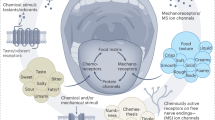Abstract
Many plant-based beverages (PBBs) in the US Department of Agriculture Branded Food Products Database serve as milk alternatives or replacements. Their collective nutrient content and fortification patterns need to be evaluated more fully. Listed ingredients for 641 PBBs were machine-searched for added vitamins, minerals, sugar and salt. The Nutrient Rich Food index NRF5.3 measured nutrient density. Except for soy milks, there was little consistency in nutrient density and micronutrient content across and within PBB product types. Industry-wide voluntary nutrient standards are one mechanism to bring more consistency to the expanding PBB category.
This is a preview of subscription content, access via your institution
Access options
Access Nature and 54 other Nature Portfolio journals
Get Nature+, our best-value online-access subscription
$29.99 / 30 days
cancel any time
Subscribe to this journal
Receive 12 digital issues and online access to articles
$119.00 per year
only $9.92 per issue
Buy this article
- Purchase on Springer Link
- Instant access to full article PDF
Prices may be subject to local taxes which are calculated during checkout

Similar content being viewed by others
Data availability
The USDA BFPDB is publicly available online at FoodData Central.
Code availability
The SPSS code for calculating the NRF score is in the public domain and can be provided on request.
References
Sexton, A. E., Garnett, T. & Lorimer, J. Framing the future of food: the contested promises of alternative proteins. Environ. Plan. E Nat. Space 2, 47–72 (2019).
McClements, D. J., Newman, E. & McClements, I. F. Plant-based milks: a review of the science underpinning their design, fabrication, and performance. Compr. Rev. Food Sci. Food Saf. 18, 2047–2067 (2019).
Ferreira, S. Going Nuts About Milk? Here’s What You Need to Know About Plant-based Milk Alternatives (25 January 2019, American Society for Nutrition); https://nutrition.org/going-nuts-about-milk-heres-what-you-need-to-know-about-plant-based-milk-alternatives/
Chalupa-Krebzdak, S., Long, C. J. & Bohrer, B. M. Nutrient density and nutritional value of milk and plant-based milk alternatives. Int. Dairy J. 87, 84–92 (2018).
Merritt, R. J. et al. North American Society for Pediatric Gastroenterology, Hepatology, and Nutrition position paper: plant-based milks. J. Pediatr. Gastroenterol. Nutr. 71, 276–281 (2020).
Zhang, Y. Y., Hughes, J. & Grafenauer, S. Got mylk? The emerging role of Australian plant-based milk alternatives as a cow’s milk substitute. Nutrients 12, 1254 (2020).
Pehrsson, P. et al. USDA Branded Food Products Database (USDA Agricultural Research Service, 2018); https://data.nal.usda.gov/dataset/usda-branded-food-products-database
Drewnowski, A. & Fulgoni, V. L. Nutrient density: principles and evaluation tools. Am. J. Clin. Nutr. 99, 1223S–1228S (2014).
Drewnowski, A. Uses of nutrient profiling to address public health needs: from regulation to reformulation. Proc. Nutr. Soc. 76, 220–229 (2017).
Electronic code of Federal Regulations: Part 101 Food labeling. available at: https://www.ecfr.gov/cgi-bin/text-idx?node=pt21.2.101&rgn=div5
Acknowledgements
Analyses of the publicly available USDA BFPDB were supported by Dairy Management Inc. The funder was not involved in data collection, data analysis, interpretation of data, the writing of the initial draft of the article or in the decision to submit the manuscript for publication.
Author information
Authors and Affiliations
Corresponding author
Ethics declarations
Competing interests
A.D. is the original developer of the Naturally Nutrient Rich and the Nutrient Rich Food (NRF) indices. That work was supported at the time by the Nutrient Rich Coalition whose members were the Beef Checkoff Program through the National Cattlemen’s Beef Association, the California Avocado Commission, California Kiwifruit, the California Strawberry Commission, the Egg Nutrition Center, Florida Department of Citrus, the Grain Foods Foundation, the National Dairy Council, the National Pork Board, the United States Potato Board, the Wheat Foods Council and the Wild Blueberry Association of North America. A.D. has received grants, contracts and honoraria from entities both public and private with an interest in nutrient density metrics and nutrient profiling of foods.
Additional information
Peer review information Nature Food thanks Michael Gibney, Edmond Rock and the other, anonymous, reviewer(s) for their contribution to the peer review of this work.
Publisher’s note Springer Nature remains neutral with regard to jurisdictional claims in published maps and institutional affiliations.
Supplementary information
Rights and permissions
About this article
Cite this article
Drewnowski, A. Plant-based milk alternatives in the USDA Branded Food Products Database would benefit from nutrient density standards. Nat Food 2, 567–569 (2021). https://doi.org/10.1038/s43016-021-00334-5
Received:
Accepted:
Published:
Issue Date:
DOI: https://doi.org/10.1038/s43016-021-00334-5



